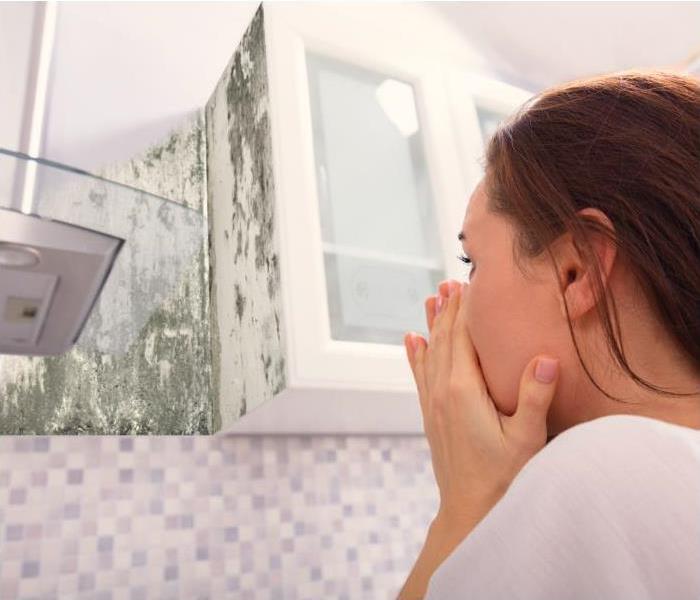How to Prevent Mold Growth After Water Damage in Salt Lake City, UT
3/9/2024 (Permalink)
Water damage can be a homeowner's worst nightmare, and when it occurs, the risk of mold growth becomes a significant concern. Salt Lake City, UT, with its unique climate and topography, presents specific challenges when it comes to dealing with water damage and preventing mold. In this comprehensive guide, we'll explore effective strategies to safeguard your home and belongings from mold growth after water damage in the Salt Lake City area.
Understanding the Salt Lake City Climate:
Salt Lake City experiences a semi-arid climate with hot summers and cold winters. This climate variation can contribute to water damage through factors like heavy snowfall followed by rapid thaws, flash floods during summer storms, and occasional plumbing issues. These diverse scenarios require tailored approaches to prevent mold growth effectively.
Immediate Actions after Water Damage:
The first 24 to 48 hours are crucial when it comes to preventing mold growth after water damage. Quick and decisive actions can significantly impact the outcome. Here's a step-by-step guide on what to do immediately:
Safety First:
Ensure everyone's safety by turning off the electricity and gas supply to the affected area. If the water damage is extensive, it's advisable to evacuate until professionals deem the area safe.
Stop the Water Source:
Identify and stop the source of water leakage or flooding. This could be a burst pipe, a leaking roof, or flooding from heavy rains.
Remove Excess Water:
Use pumps, wet/dry vacuums, or buckets to remove standing water. The faster you can extract water, the less likely mold will have a chance to develop.
Ventilation:
Open windows and doors to facilitate air circulation. This helps in drying out the affected areas and preventing mold spores from settling.
Remove Wet Items:
Move wet furniture, carpets, and personal belongings to a dry area. Salvage what you can, and discard items that are beyond repair.
Use Dehumidifiers:
Deploy dehumidifiers to reduce the moisture levels in the air. Lower humidity inhibits mold growth, making it a crucial step in the prevention process.
Drying Out Your Home:
Once you've addressed the immediate concerns, the next step is to thoroughly dry out your home. In Salt Lake City, where cold winters can complicate the drying process, it's essential to be diligent in this phase:
Professional Drying Equipment:
Consider hiring professionals with industrial-grade drying equipment. These experts can ensure that even hard-to-reach areas are thoroughly dried, reducing the risk of mold growth.
Focus on Building Materials:
Pay special attention to structural elements like drywall, insulation, and wooden structures. These materials can retain moisture, providing an ideal environment for mold if not adequately dried.
Flooring Considerations:
Carpets, especially if saturated, can be a breeding ground for mold. If possible, remove and replace them. Hardwood floors may also need specialized drying techniques to prevent warping.
Inspection for Hidden Moisture:
Perform a thorough inspection to identify any hidden pockets of moisture. This may involve using moisture meters and infrared cameras to detect moisture behind walls or under flooring.
Preventing Mold Growth:
With the initial cleanup completed, it's time to implement preventive measures to ensure mold doesn't take hold. In Salt Lake City's climate, where humidity levels can vary, these steps are crucial:
Proper Ventilation:
Ensure that your home is adequately ventilated. Use exhaust fans in bathrooms and kitchens, and consider installing a whole-house ventilation system. Proper ventilation helps control humidity levels, reducing the likelihood of mold growth.
Monitor Humidity Levels:
Keep an eye on indoor humidity levels, especially during seasons with higher humidity. Aim for humidity levels between 30-50%. Use dehumidifiers if necessary.
Regular Inspections:
Perform regular inspections of your home, especially in vulnerable areas like basements and attics. Look for signs of water leaks, condensation, or dampness. Address any issues promptly.
Waterproofing:
Invest in waterproofing measures, such as sealing cracks in the foundation and walls. This can prevent water from seeping into your home, reducing the risk of future water damage.
Landscaping Considerations:
Ensure proper grading around your home to direct water away from the foundation. Keep gutters clean and in good condition to prevent water from overflowing and causing damage.
Proper Storage:
Store items in areas less prone to water damage. Elevate belongings in basements, use water-resistant storage containers, and avoid storing items directly on the floor.
Professional Assistance:
In some cases, especially with extensive water damage, seeking professional assistance is the best course of action. Professional restoration companies in Salt Lake City have the expertise and equipment to handle large-scale water damage effectively. They can conduct thorough assessments, provide a comprehensive plan for cleanup and drying, and offer preventive measures to safeguard against mold.
Water damage is a significant concern for homeowners in Salt Lake City, UT, given its unique climate and topographical challenges. However, with prompt action, thorough drying, and preventive measures, you can minimize the risk of mold growth and protect your home and belongings. By understanding the specific needs of your region and implementing the strategies outlined in this guide, you can navigate the aftermath of water damage with confidence, ensuring a safe and mold-free living environment for you and your family.





 24/7 Emergency Service
24/7 Emergency Service
